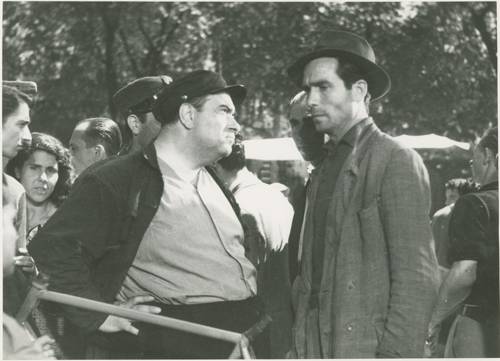
FAQ About The Influence of Neorealism on Global Cinema

What is Neorealism in cinema?
Neorealism, also known as Italian Neorealism, is a film movement that emerged in Italy during the 1940s, shortly after World War II. It is characterized by its focus on realistic narratives, representing the everyday lives of ordinary people. The movement aimed to portray the social and economic conditions of the time, using on-location shooting, non-professional actors, and a documentary style to enhance authenticity.

How did Neorealism begin?
The roots of Neorealism can be traced back to the aftermath of World War II. Italy, grappling with significant economic and social turmoil, became fertile ground for filmmakers to explore stories reflective of their social realities. Films like Roberto Rossellini's Rome, Open City (1945) and Vittorio De Sica's Bicycle Thieves (1948) are considered pioneering works that established the foundations of the Neorealist approach.

What are the key characteristics of Neorealist films?
Key characteristics of Neorealist films include the use of on-location shooting, non-professional actors, and stories focusing on the lives of the poor and working-class. These films aim to reflect true-life challenges and social issues, featuring a documentary-like style that emphasizes realism over glamour or melodrama.

How has Neorealism influenced global cinema?
Neorealism has had a profound influence on global cinema by inspiring filmmakers around the world to adopt similar realistic storytelling techniques. This movement emphasized the importance of raw, authentic narratives that focus on social issues, which paved the way for future film styles like the French New Wave, British Free Cinema, and Iranian New Wave, each incorporating elements of realism and evolving them within their cultural contexts.

What are some famous Neorealist films?
Some classic Italian Neorealist films include Roberto Rossellini's Rome, Open City (1945), Vittorio De Sica's Bicycle Thieves (1948), Luchino Visconti's La Terra Trema (1948), and Federico Fellini's early works like La Strada (1954). These films are celebrated for their realistic depiction of society and their influence on cinematic narratives worldwide.

Why did Neorealism emerge primarily in Italy?
Neorealism emerged in Italy due to the socio-political and economic conditions post-World War II. The devastation of the war led to widespread poverty and hardship, providing fertile ground for filmmakers to tell stories that resonated strongly with the public. The movement was a reaction against the propagandist, escapist films of the previous decades and sought to reflect the harsh realities of everyday life.

Who were the main directors associated with Neorealism?
The main directors associated with the Neorealism movement include Roberto Rossellini, Vittorio De Sica, and Luchino Visconti. These filmmakers are renowned for their foundational contributions to the movement, creating films that focused on social issues and employed realistic storytelling techniques.

How did filmmakers create a realistic atmosphere in Neorealist films?
Filmmakers used several techniques to create a realistic atmosphere in Neorealist films, such as on-location shooting to capture the authentic look and feel of the environment, casting non-professional actors to enhance the realism of characters, and focusing narratives on everyday struggles and social issues that were relevant to contemporary audiences.

What social issues are commonly addressed in Neorealist films?
Neorealist films often address a range of social issues including poverty, unemployment, class struggles, and the impact of war. These films strive to give a voice to the marginalized and portray the challenges faced by ordinary people during the post-war period, aiming to evoke empathy and social awareness.

How did Neorealism influence the French New Wave and other film movements?
Neorealism influenced the French New Wave and other film movements by demonstrating the potential of cinema as a tool to convey authentic, socially relevant stories. Directors like Jean-Luc Godard and François Truffaut were inspired by the Neorealists' focus on realism and improvised storytelling, adopting similar techniques such as hand-held camerawork and on-location shooting to convey their narratives.

What role did non-professional actors play in Neorealist films?
Non-professional actors played a crucial role in Neorealist films, as their use enhanced the authenticity and relatability of the characters. Casting ordinary people rather than trained actors allowed filmmakers to portray genuine reactions and interactions, further grounding the films in reality and making the stories more compelling to audiences.

How did economic conditions in Italy after World War II contribute to Neorealism?
The economic conditions in Italy post-World War II, marked by widespread poverty and unemployment, were pivotal to the emergence of Neorealism. These hardships provided filmmakers with a wealth of real-life material to draw upon, compelling them to create films that depicted the stark realities of life without romanticism or embellishment.

What distinguishes Neorealist films from other cinematic genres?
Neorealist films are distinguished by their focus on everyday life and social issues, their use of real locations, and non-professional actors, providing a stark contrast to the more stylized and escapist traditions of Hollywood cinema. This emphasis on realism and authenticity sets Neorealism apart as a movement that seeks to engage with the audience intellectually and emotionally through relatable and potent narratives.

How did Neorealism affect the use of locations in films worldwide?
Neorealism impacted the global film industry by encouraging filmmakers to shoot on location rather than in studios. This approach brought an authentic look and feel to films, allowing for more realistic storytelling. It inspired movements like the French New Wave and New Hollywood, where directors embraced the use of real-world settings to ground their stories in reality.

Why did Neorealism decline in the 1950s?
Neorealism began to decline in the 1950s as Italy's economy started to recover, leading to changes in public taste and a shift towards more commercial and escapist forms of entertainment. Additionally, some filmmakers felt increasingly restricted by the Neorealist style and began to explore other creative avenues, leading to the evolution of cinematic styles.

How did Neorealism influence Indian cinema?
Neorealism had a significant influence on Indian cinema, particularly on the Parallel Cinema movement. Indian filmmakers like Satyajit Ray and Bimal Roy embraced Neorealist techniques such as on-location shooting and stories focused on social issues and the everyday lives of ordinary people. This resulted in films that offered a stark contrast to the glamour of popular Bollywood productions.

Can you name a non-Italian filmmaker influenced by Neorealism?
Satyajit Ray, an iconic Indian filmmaker, was heavily influenced by Italian Neorealism. His acclaimed film, Pather Panchali (1955), exhibits hallmarks of the Neorealist style, including a focus on the plight of the poor and the use of non-professional actors. Ray's work has since become an essential part of world cinema, continuing the legacy of Neorealism's global impact.

What did Neorealism contribute to the storytelling aspects of films?
Neorealism contributed significantly to the storytelling aspects of films by prioritizing authenticity and emotional truth over conventional narratives and fantastical elements. This emphasis on realistic and relatable stories helped filmmakers across the globe to create compelling narratives that resonate with audiences on a deeper level, especially those dealing with social and cultural issues.

How is Neorealism relevant to modern cinema?
Neorealism remains relevant to modern cinema as its foundational principles continue to inspire filmmakers to pursue realistic storytelling, focusing on modern-day social issues and authentic character portrayals. The movement's emphasis on the real-world socio-economic and political narratives resonates with today's audiences and filmmakers alike, as seen in films addressing contemporary challenges.

Is Neorealism still influencing filmmakers today?
Yes, Neorealism still influences filmmakers today. Its emphasis on realism, social issues, and stories of ordinary people continues to resonate with contemporary directors who seek to reflect the complexities of true life in their work. This influence can be seen in various film movements and industries worldwide, where the essence of Neorealism is adapted to fit modern contexts and narratives.
